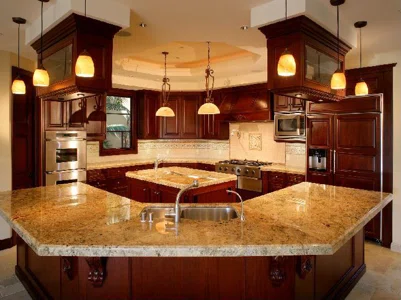
Granite and basalt are two of the most well-known and widely used igneous rocks on Earth.
Granite and basalt are two of the most well-known and widely used igneous rocks on Earth. While they may differ significantly in appearance and texture, these natural stones share a number of geological characteristics that link them closely in origin and formation. In this article, we’ll explore what granite and basalt have in common, as well as what sets them apart.
Whether you’re a geology enthusiast, builder, or someone shopping for countertops, understanding the similarities and differences between these rocks can help you make more informed decisions.

What Is Granite?
Definition and Formation
Granite is a coarse-grained intrusive igneous rock, formed from the slow cooling of magma deep beneath the Earth’s surface. It is composed primarily of quartz, feldspar, and mica.
Granite’s visible crystal structure and wide range of colors make it a favorite for construction and decorative uses, especially in kitchen countertops and flooring.
Learn more: Is granite a heterogeneous mixture?

What Is Basalt?
Definition and Formation
Basalt is a fine-grained extrusive igneous rock that forms when lava erupts and cools quickly at or near the Earth’s surface. It primarily contains pyroxene and plagioclase, with some olivine.
Basalt is usually dark gray to black in color and has a smooth, uniform texture. It’s commonly found in oceanic crust and volcanic regions.
Similarities Between Granite and Basalt
1. Both Are Igneous Rocks
- Granite and basalt are both igneous rocks, meaning they form from the cooling and solidification of molten magma or lava.
- The main difference lies in the location and speed of cooling:
- Granite cools slowly underground (intrusive)
- Basalt cools quickly at the surface (extrusive)
2. Crystalline Structure
- Both rocks have crystalline structures formed from mineral crystals.
- In granite, crystals are large and easily visible; in basalt, crystals are tiny due to rapid cooling.
3. Natural Durability
- Both stones are strong, dense, and durable, making them excellent choices for architectural and industrial use.
- Their resistance to heat and wear makes them suitable for building facades, tiles, monuments, and countertops.
Geological Properties They Share
4. Rich in Silicate Minerals
Granite and basalt are both made primarily of silicate minerals, which are the most abundant group of minerals in the Earth’s crust.
5. Found in Tectonic Plate Settings
- Granite is commonly found in continental crust.
- Basalt is a major component of oceanic crust.
Yet, both originate from tectonic plate activity and magma generation in Earth’s mantle.
Practical Applications of Granite and Basalt
6. Construction and Infrastructure
Both materials are widely used in:
- Road bases and rail ballast
- Paving stones and tiles
- Countertops and slabs
Granite, however, is more often used in high-end applications such as polished countertops and cladding.
Read more: Granite countertop
Differences Between Granite and Basalt
Cooling Rate and Crystal Size
- Granite: Slow cooling = large crystals
- Basalt: Rapid cooling = tiny crystals
Appearance and Texture
- Granite: Speckled, multicolored, coarse-grained
- Basalt: Uniform, dark, fine-grained
Common Locations
- Granite: Continental plates, mountain ranges
- Basalt: Ocean floors, volcanic islands, hot spots
Granite for Countertops: A Closer Look
Granite has become a staple in modern kitchens for its beauty and strength. Popular trends include:
- White granite countertops for a clean, modern aesthetic
- Black granite countertops for bold sophistication
- Granite backsplash designs that complement cabinetry
Tips:
Maintenance tasks like cleaning granite countertops, sealing granite, and repairing chips in granite help preserve its longevity.
Aardwolf Granite Solutions
Looking for professional-grade materials and support?
- Aardwolf granite countertop collection
- Premium granite slabs
- Installation and repair tools
- Jib crane systems for safe material handling
Conclusion: Common Ground Between Granite and Basalt
While granite and basalt may appear different on the surface, they share a fundamental origin as igneous rocks. Their shared features—mineral composition, durability, and geological roots—demonstrate nature’s consistency in creating some of the Earth’s most important materials.
Whether you’re installing a granite countertop or studying Earth science, understanding what granite and basalt have in common enhances your appreciation for the geological wonders beneath our feet.

